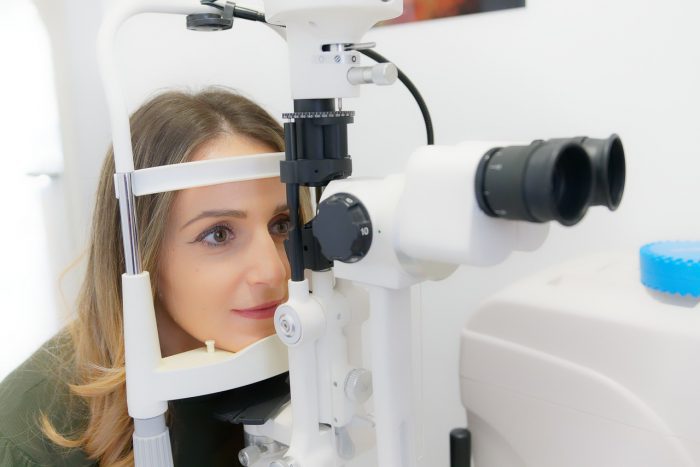Medical Compass: Can avoiding meat reduce your cataract risk?
By David Dunaief, M.D.

June is cataract awareness month. How much do you know about how to reduce your risk?
A cataract is an opacity or cloudiness of the lens in the eye, which decreases vision over time as it progresses. Typically, it’s caused by oxidative stress, and it’s common for both eyes to be affected. As we get older, the likelihood we will have cataracts that affect our vision increases.
In the U.S., 24.4 million people over the age of 40 were afflicted in 2015, according to statistics gathered by the National Eye Institute of the National Institutes of Health (1). Approximately 50 percent of Americans have cataracts by age 75.
Cataract prevalence varies considerably by gender, with 61 percent of cases being women, and by race; 80 percent of those affected are white. Chronic diseases, such as diabetes and metabolic syndrome; steroid use; and physical inactivity can contribute to your risk.
The good news is that we can take an active role in preventing them. Protecting your eyes from the sun and injuries, quitting smoking, and increasing your consumption of fruits and vegetables can improve your odds. Here, we will focus on the dietary factor.
How does meat consumption affect cataract risk?
Diet has been shown to have substantial effect on the risk reduction for cataracts (2). One of the most expansive studies on cataract formation and diet was the Oxford (UK) group, with 27,670 participants, of the European Prospective Investigation into Cancer and Nutrition (EPIC) trial. Participants completed food frequency questionnaires between 1993 and 1999. Then, they were checked for cataracts between 2008 and 2009.
There was an inverse relationship between cataract risk and the amount of meat consumed. In other words, those who ate more meat were at higher risk of cataracts. “Meat” included red meat, fowl and pork. These results followed what we call a dose-response curve.
Compared to high meat eaters, every other group demonstrated a significant risk reduction as they progressed along a spectrum that included low meat eaters (15 percent reduction), fish eaters (21 percent reduction), vegetarians (30 percent reduction) and finally vegans (40 percent reduction).
There really was not that much difference in meat consumption between high meat eaters, those having at least 3.5 ounces, and low meat eaters, those having less than 1.7 ounces a day, yet there was a substantial decline in cataracts. This suggests that you can realize a meaningful effect by reducing or replacing your average meat intake, rather than eliminating meat from your diet.
In my clinical experience, I’ve had several patients experience cataract reversal after they transitioned to a nutrient-dense, plant-based diet. This is a very positive outcome and was confirmed by their ophthalmologists.
Do antioxidants help prevent cataracts?
Oxidative stress is one of the major contributors to cataract development. In a review article that looked at 70 different trials for the development of cataract and/or maculopathies, such as age-related macular degeneration, the authors concluded antioxidants, which are micronutrients found in foods, play an integral part in eye disease prevention (3). The authors go on to say that a diet rich in fruits and vegetables, as well as lifestyle modification with cessation of smoking and treatment of obesity at an early age, help to reduce the risk of cataracts. You are never too young or too old to take steps to protect your vision.
Among antioxidant-rich foods studied that have shown positive effects is citrus. The Blue Mountains Eye Study found that participants who had the highest dietary intake of vitamin C reduced their 10-year risk for nuclear cataracts (4).
How effective is cataract surgery?
The only effective way to treat cataracts is with surgery; the most typical type is phacoemulsification. Ophthalmologists remove the opaque lens and replace it with a synthetic intraocular lens. This is an outpatient procedure and usually takes about 30 minutes. Fortunately, there is a very high success rate for this surgery. So why is it important to avoid cataracts if surgery can remedy them?
There are always potential risks with invasive procedures, such as infection, even though the chances of complications are low. However, more importantly, there is a greater than fivefold risk of developing late-stage, age-related macular degeneration (AMD) after cataract surgery (5). This is wet AMD, which can cause significant vision loss. These results come from a meta-analysis (group of studies) looking at more than 6,000 patients.
It has been hypothesized that the surgery may induce inflammatory changes and the development of leaky blood vessels in the retina of the eye. However, this meta-analysis was based on observational studies, so it’s not clear whether undiagnosed AMD may have existed prior to the cataract surgery, since they have similar underlying causes related to oxidative stress.
If you can reduce the risk of cataracts through diet and other lifestyle modifications, plus avoid potential consequences from cataract surgery, all while reducing the risk of chronic diseases, why not choose the win-win scenario?
References:
(1) nei.nih.gov. (2) Am J Clin Nutr. 2011 May; 93(5):1128-1135. (3) Exp Eye Res. 2007; 84: 229-245. (4) Am J Clin Nutr. 2008 Jun; 87(6):1899-1305. (5) Ophthalmology. 2003; 110(10):1960.
Dr. David Dunaief is a speaker, author and local lifestyle medicine physician focusing on the integration of medicine, nutrition, fitness and stress management. For further information, visit www.medicalcompassmd.com or consult your personal physician.







